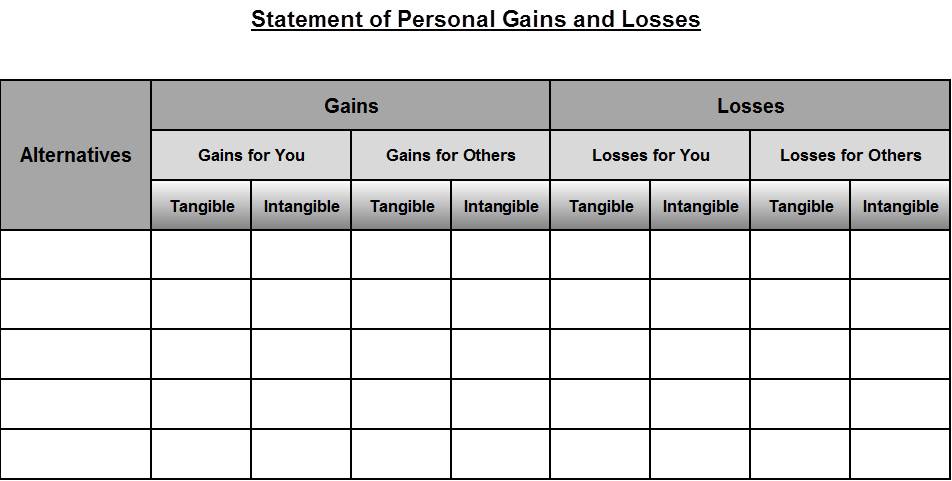
Personal Gains and Losses
Determine expected personal gains and losses for each of your solutions.
The Personal Gains and Losses technique (Janis and Mann, 1977) is actually a variation of 'Pros & Cons'. Originally intended for use in the presence of some person like a therapist to assist individuals to increase their commitment to private decisions, such as giving up smoking.
There is plenty of research to support the theory that when you make a recorded statement of why you believe that a particular course of action is correct for you, it becomes easier to commit.
This statement also serves as a written balance sheet for your plan. Refer back to it and compare with actual events. This feedback is a critical step to having accountability in your problem-solving process.
To record a Statement of Personal Gains and Losses:
Step 1: Create a table with 9 columns (see table below).
Step 2: List your Alternatives down the left-hand column.
Step 3: Label the other columns: 'Gains for You-Tangible', 'Gains for You-Intangible', 'Gains for Others-Tangible', 'Gains for Others-Intangible', 'Losses for You-Tangible', 'Losses for You-Intangible', 'Losses for Others-Tangible', and 'Losses for Others-Intangible'.
Step 4: List the expected gains for yourself.
Step 5: For all of these, separate them into tangible (possessions, money, health, etc.) and intangible (approval, confidence, self-image, reputation, etc.).
Step 6: List the expected gains for others.
Step 7: List the expected losses for yourself.
Step 8: List the expected losses for others.
Step 9: Repeat for each alternative.
Diagram of a Statement of Personal Gains and Losses table:

Word version of Statement of Personal Gains and Losses.docx (Click link to download Word version).
Excel version of Statement of Personal Gains and Losses.xlsx (Click link to download Excel version).
PDF version of Statement of Personal Gains and Losses.pdf (Click link to download PDF version).
